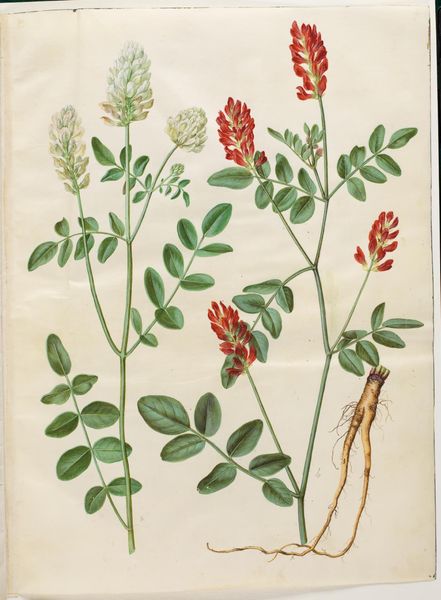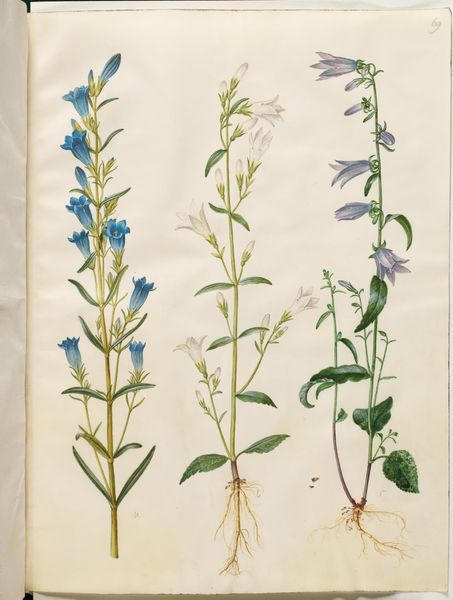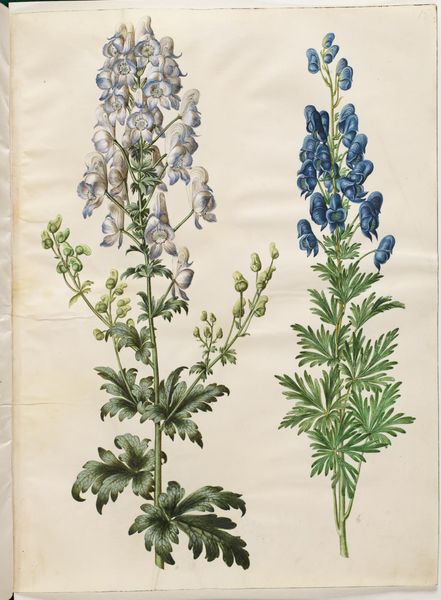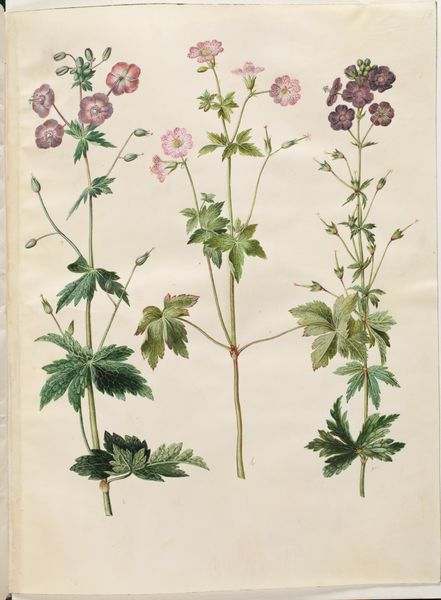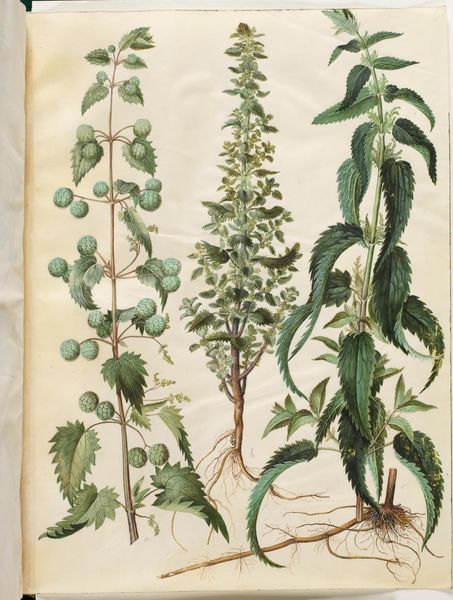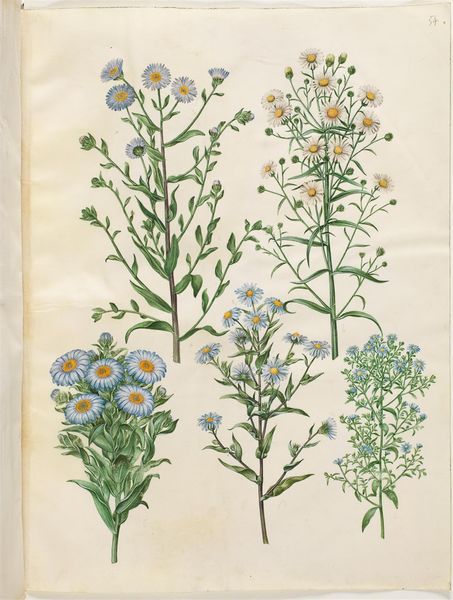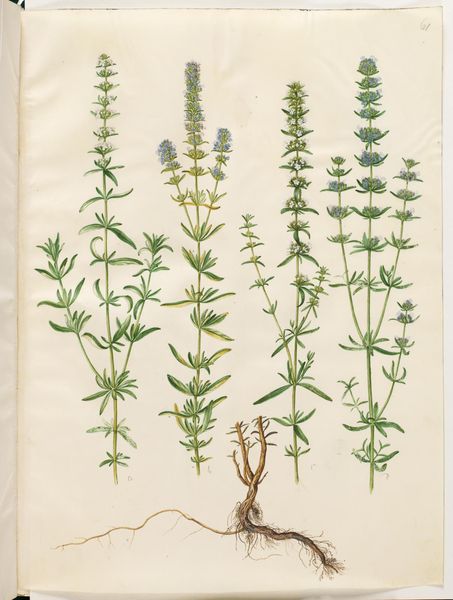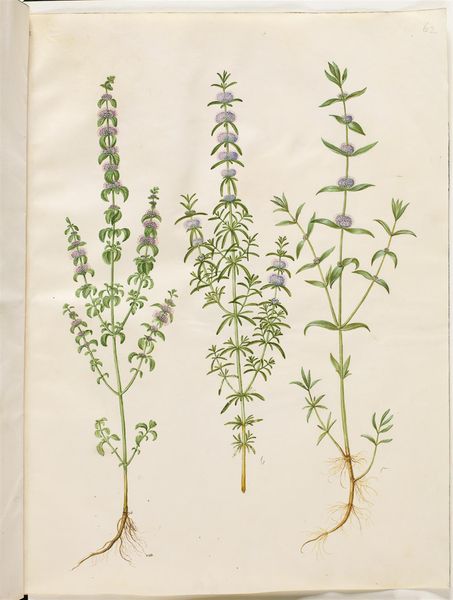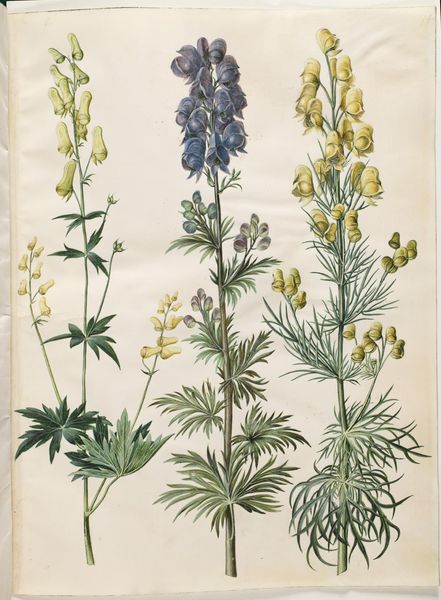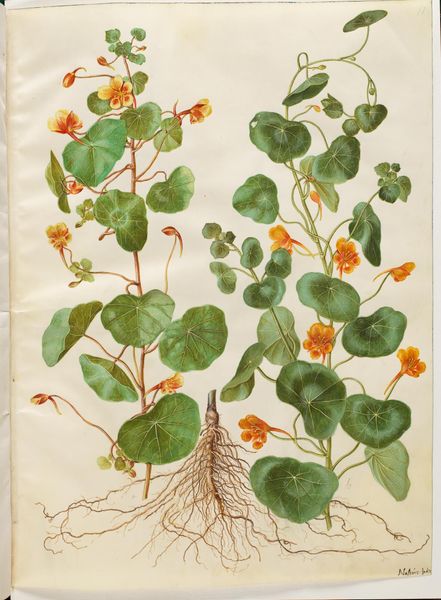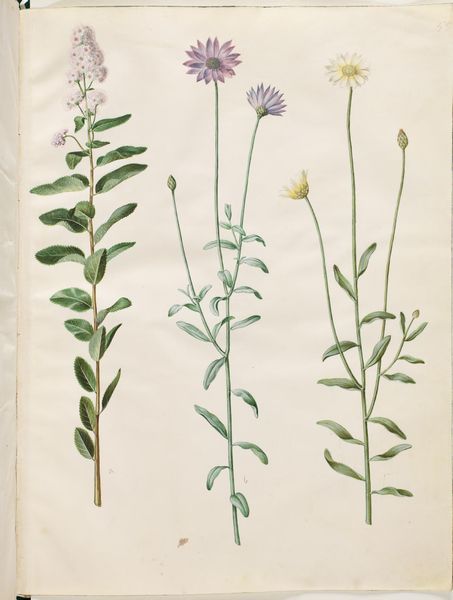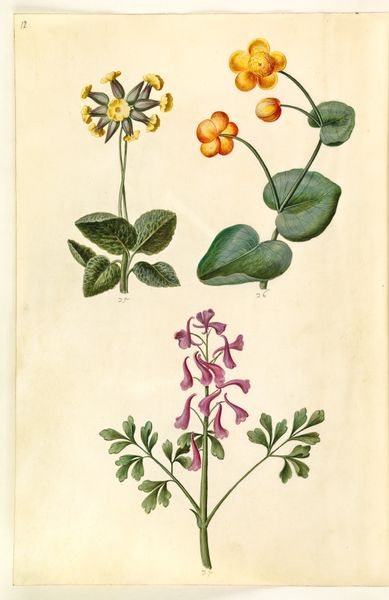
Dracocephalum moldavica (moldavisk dragehoved); Moluccella spinosa (tornet tragtbæger); Melissa officinalis (citron-melisse) 1649 - 1659
0:00
0:00
drawing, gouache, watercolor
#
drawing
#
water colours
#
gouache
#
watercolor
#
watercolour illustration
#
northern-renaissance
#
botanical art
#
watercolor
Dimensions: 505 mm (height) x 385 mm (width) (bladmaal)
Here is a depiction of Dracocephalum moldavica, Moluccella spinosa, and Melissa officinalis created by Hans Simon Holtzbecker. Each plant possesses its unique symbolism rooted deeply in historical and cultural contexts. Consider the Moluccella spinosa, or thorny molucca balm, its bell-shaped flowers recall ancient associations with protection and healing. This echoes the imagery of protective amulets and sacred bells found across cultures, from the Mediterranean to the Far East. Its resemblance to bells is no coincidence; it's a visual echo resonating with earlier uses, the sound of a bell warding off malevolent spirits. Here it might also be a symbol of protection. Holtzbecker captured not just the likeness of these plants but their embedded cultural echoes, their latent memories. This image provides a glimpse into the way cultural memory and the human psyche intertwine. The choice of plants reveals the emotional and psychological undercurrents, reflecting humanity’s enduring relationship with nature. These symbols have been passed down through history, shifting and gaining new meanings in different contexts.
Comments
No comments
Be the first to comment and join the conversation on the ultimate creative platform.
